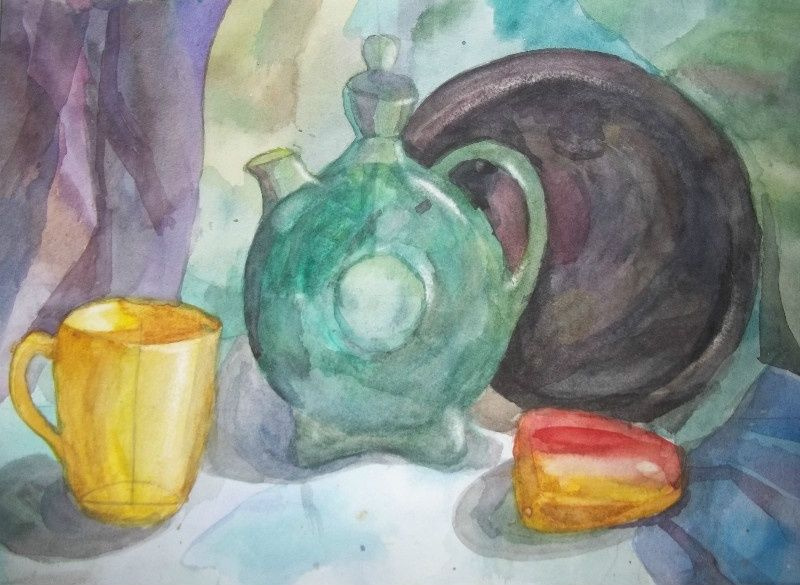Watercolour (it. "aquarello", germ. "Aquarell") is a well-known painting technique with water-based paints. It was invented in the 3rd century in China. Watercolours become transparent after dissolving in water, so when applied to grainy paper, the image looks airy and thin. Unlike oil paintings, watercolour paintings lack textured strokes.

Watercolourists can paint on a dry surface, drying each individual layer (Italian watercolour). In order to create blurring, the paper is pre-wetted with water (English watercolour). This type of watercolour technique is more difficult, as watercolour can flow. Such paintings are almost impossible to copy, because every brush mark on a wet sheet behaves unpredictably. In addition to this technique, artists use painting on a fragmentarily moistened surface, filling and point shading.
Moorland landscape
1886, 30×18 cm
Watercolour requires much skill, because paints dry quickly, and their transparency does not suppose re-painting the picture. It is impossible to correct a certain fragment without affecting the rest. It is often combined with other techniques such as charcoal and pencil drawings. White is not used, its role is played by paper.








